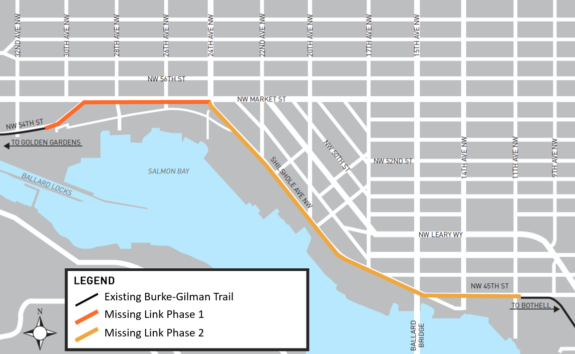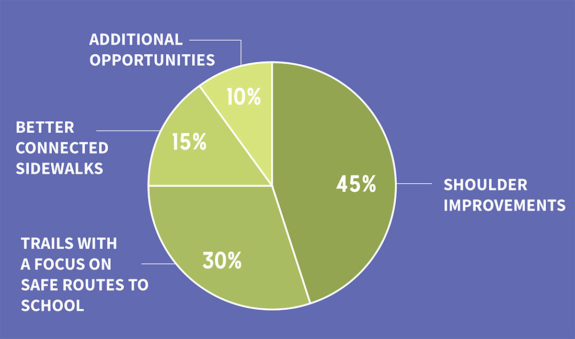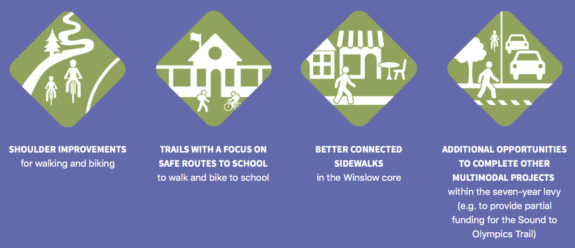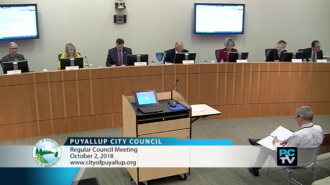
 Barring a court order, construction on the Ballard Missing Link of the Burke-Gilman Trail is scheduled to begin this winter. So while an appeal is still working its way through the courts, the city is moving forward with a construction plan that would have the trail fully open by the end of 2020. That’s 18 years after the Seattle City Council first voted to build this segment.
Barring a court order, construction on the Ballard Missing Link of the Burke-Gilman Trail is scheduled to begin this winter. So while an appeal is still working its way through the courts, the city is moving forward with a construction plan that would have the trail fully open by the end of 2020. That’s 18 years after the Seattle City Council first voted to build this segment.
The work has beed divided into two phases that will overlap. The first section, from the Locks to 24th and Market, is scheduled to begin construction in just a few months. If all goes as planned, it would be open in about a year. Construction on the second phase, from Market St. to Fred Meyer, is set to begin in the summer and would open in autumn of 2020.
The biggest sticking point of the whole route is the industrial driveway crossings along Shilshole. The latest design includes green paint and flashing LED signs warning trail users about trucks.
Many crosswalks have been significantly improved, as well. And there is now a biking and walking path to the 20th Ave NW Street End Park on Salmon Bay, which I did not even know existed. So that’s very cool. Here are the latest designs moving from east to west: (more…)












